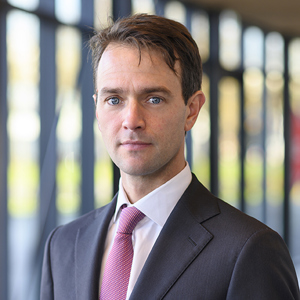Relevant facts (simplified)
Y BV was established in 2007. Its director and sole shareholder is X (an individual). Y BV holds shares in Z BV, which entity was established in 2011 to facilitate a third party investment (85%) in the operational group held by Y BV. Z BV is tax resident in the Netherlands.
In 2011, X and Y BV relocated their tax residence from the Netherlands to Curacao. In 2015, Z BV and the third party sold their shares in the operational group. The proceeds were distributed to Z BV’s shareholders, including Y BV, in 2016.
The Dutch tax authorities (DTA) took the view that this dividend distribution fell within the scope of an anti-abuse rule and as such was taxable in the Netherlands.
Relevant Dutch anti-abuse rule
As a main rule, non-resident entities are not subject to Dutch corporate income tax (CIT) on income (and capital gains) derived from substantial shareholdings (≥5%) in entities having their tax residence in the Netherlands. This is different, however, if these non-resident entities are considered to hold their shares in the Dutch entity for abusive purposes. The key element is whether the holding structure should be considered artificial.
In practice, the DTA apply the abuse-test by (i) comparing Dutch taxation in the holding structure at hand to a situation without the non-resident holding entity (or entities) and (ii) a review of the activities of the non-resident holding entity in relation to its Dutch shareholding.
Decision
The Supreme Court gives further guidance how the abuse-test should be applied, in particular in relation to EU law on which the anti-abuse rule is based. It inter alia held the following:
- From established case law of the Court of Justice of the EU (CJEU) it follows that a structure is considered artificial if it is not set up for reasons that reflect economic reality, is purely one of form and its principal objective or one of its principal objectives is to obtain a tax advantage that goes against the aim or purpose of the applicable tax law (improper tax benefit).
- The artificial nature of a structure could be inferred from certain indicators. For entities receiving dividends, these include not being the beneficial owner of the dividends (conduit entities), lacking economic activities, and having the effect of reducing the UBOs’ overall tax burden on the dividends. The Supreme Court refers to the T Danmark and Y Denmark cases of the CJEU. See our website post on these cases.
- However, a structure is not artificial – even if it lacks economic substance or meets certain of the above indicators – unless it is considered to be set up with the intention to obtain an improper tax benefit. This should not be assessed in isolation, but taking into account all relevant facts and circumstances (holistic view), including historic context of and motives for how a certain structure evolved over time. This follows from the Supreme Court’s reference to the recent Nordcurrent case of the CJEU. See our website post on the Nordcurrent case.
Based on the above, the Supreme Court upheld the ruling of the Court of Appeal that while Y BV lacked economic substance and its use resulted in a tax benefit for X, it was not part of an artificial (and thus abusive) structure.
The decisions appears to be based on the circumstances that (i) the cross-border structure was created, and evolved, over time for non-tax reasons, (ii) Y BV – while having little substance – was still the beneficial owner of the dividend and, (iii) the tax benefit in this structure was the result of tax rules that came into effect between the Netherlands and Curacao after X and Y BV relocated to Curacao for non-tax reasons (without them knowing these rules would come into effect).
Relevance and key take aways
The Supreme Court decisions provide further guidance on how Dutch anti-abuse rules in international holding structures should be applied. Since these anti-abuse rules find their basis in the EU abuse of law doctrine, the framework set out by the Supreme Court is also relevant for other Dutch anti-abuse rules that are based on that EU concept of abuse.
For these anti-abuse rules, key take away from the Supreme Court decisions in our view is that whilst a lack of economic substance in itself can be an indication of abuse, a holistic assessment of a transaction or structure requires at all times that the aim or motive of a structure is properly taken into account. This should be assessed not in isolation, but based on all relevant facts and circumstances, including historical context.
We note that in 2025 the Supreme Court is expected to rule on two additional international holding cases about similar Dutch anti-abuse rules. This may offer further guidance, in particular on cases where a UBO invests in a Dutch entity via his (personal) holding company established in his own residence state.
Should you have any questions on this topic, please contact your regular trusted Loyens & Loeff adviser or one of the contact persons mentioned below.





